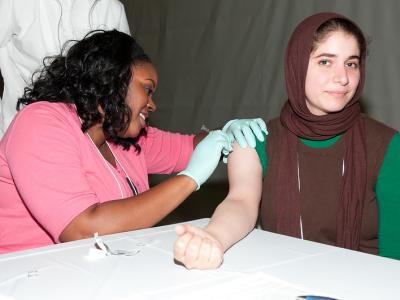Feb 12, 2013 (CIDRAP News) – A new snapshot of infections acquired at US health facilities shows encouraging reductions in some notable areas, with room for improvement in others, such as catheter-associated urinary tract infections (UTIs), the Centers for Disease Control and Prevention (CDC) reported yesterday.
The CDC based its 40-page report on data submitted by the National Healthcare Safety Network, a tracking system used by more than 11,500 facilities in 50 states, Washington, D.C., and Puerto Rico.
The findings, posted on the CDC's Web site, show changes between 2010 and 2011, as well as overall progress from the national baseline for certain healthcare-associated infections (HAIs). The report also allows infection prevention professionals to explore HAI trends by type of facility and focus on results for individual states or jurisdictions.
The biggest drop was in central line-associated bloodstream infections, which were down 32% compared with 2010 and down 41% since 2008. Central lines are tubes placed in a patient's neck or chest that serve as a portal for medication and treatment. They can cause serious bloodstream infections if hospital staff don't place central lines correctly or keep the sites clean.
The CDC also saw a drop in infections at surgical sites from procedures such as knee arthroplasty and abdominal hysterectomy. Though the overall level for those infections dropped 17% compared with 2008 data and 7% compared with 2010, improvement wasn't seen for all surgical procedures the safety network tracks.
The CDC said in a press release that there is still substantial opportunity for improvement for a range of surgical procedures.
Progress in reducing the number of catheter-linked UTIs, however, was stagnant, according to the CDC report. Although those infections dropped 7% from 2009 to 2010, their rate did not change between 2010 and 2011. The report found modest progress in reducing these infections in patients on general medical wards, but there was no reduction in critical-care patients.
The CDC said that catheter-associated UTIs are worrisome, because patients sickened by them are more likely to need antibiotics, which, while helpful, can put them at risk for other complications, including potentially fatal diarrhea caused by Clostridium difficile.
Tom Frieden, MD, MPH, CDC director, said in the press release that the reductions in some of the deadliest HAIs are encouraging, "especially when you consider the costs to both patients and the health care system." In its report the CDC put the Medicare cost of a central-line bloodstream infection in an intensive care unit patient at about $26,000, with about a $322 million annual burden to all third-party payers.
"This report also suggests that hospitals need to increase their effort to track these infections and implement control strategies that we know work," he said.
Overall, the report shows steady progress toward goals the Department of Health and Human Services (HHS) set as part of a 2008 action plan for preventing HAIs. The goal is a reduction of 50% by December 2013 for central-line infections, 25% for surgical-site infections, and 25% for catheter-related URIs.
Though progress on the goal for catheter-related infections is moving more slowly, reaching the HHS's goal is attainable with sustained prevention efforts, the CDC said. The federal government and several health professional groups have initiatives under way to boost infection prevention efforts at healthcare facilities.
See also:
Feb 11 CDC 2011 national and state HAI report
Feb 11 CDC press release

















